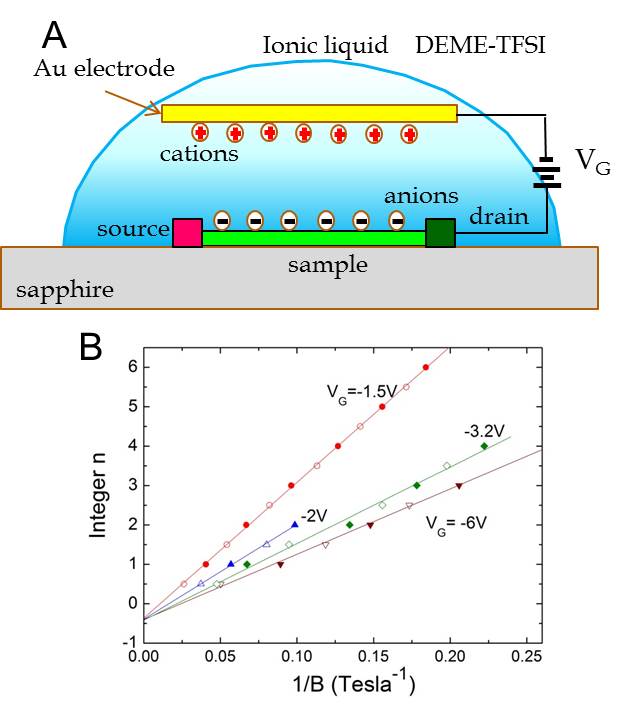In
the topological insulator Bi2Te2Se,
the electrical current is carried by both the surface electrons (“Dirac
Fermions”) and the (unwanted) bulk electrons. To reduce the bulk contribution
in a thin-film sample, one can apply a “gate”electric
field EG
to repel the bulk electrons (gating). Bulk crystals require much larger EG.
PCCM researchers recently succeeded in gating crystals using the ionic liquid
DEME-TFSI (Fig. 1A). The applied gate voltage VG
deposits a layer of anions which create an intense EG on
the sample. Cooling the sample to 4 Kelvin freezes the ionic charge
configuration. A direct way to see how EG affects
the surface electrons is to monitor the quantum oscillations in their
resistance versus an applied magnetic field B.
The oscillations result from the successive emptying of Landau Levels. A plot
of the reciprocal of the peak fields versus the integers yields a straight line
whose slope gives the surface population density Ns.
With increasing EG
(VG more
negative), Ns
is seen to decrease, confirming that the Fermi Energy approaches the Dirac
Point (Fig. 1B). Moreover, the intercepts of the straight lines remain close to
-1/2 in accord with the behavior of Dirac Fermions. The results provide a clean
verification that ionic liquid gating strongly affects the population of the
Dirac Fermions; the gate voltage directly tunes their quantum oscillations.

Figure
1 A: Sketch of the ionic-liquid gating experiment. The sample and gold
electrode are immersed in the liquid DEME-TFSI. A negative gate voltage VG
coats the sample with anions. Panel B plots the reciprocals of the fields (at
which quantum oscillations peak) versus the integers n. The
slope is proportional to the surface concentration Ns.
Note that, as Ns changes,
the intercepts remain near -1/2.
Partial
support from the Army Research Office is acknowledged.